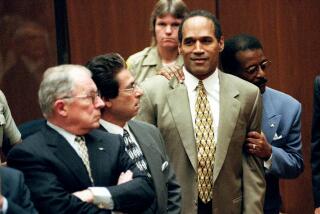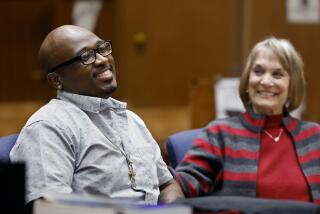Editorial: Looking for lessons in the Philando Castile video
Millions of viewers already had seen images of the aftermath of the fatal police shooting of Philando Castile on July 6, 2016, captured and live-streamed on Facebook by Diamond Reynolds, Castile’s girlfriend, who was in the back seat of the car when he was killed.
But the shooting itself, recorded in suburban Minnesota by the police officer’s dashboard camera, was seen initially only by police, investigators and lawyers; then in recent weeks by the jury and anyone who happened to be in the courtroom during the manslaughter trial of Officer Jeronimo Yanez. Finally, on Tuesday, several days after the jury delivered its not-guilty verdict, it was released to the broader public.
For the record:
4:47 a.m. April 25, 2024Diamond Reynolds was in the passenger seat of the car when Castile was shot, not the back seat.
Of course the video is disturbing: It depicts a killing. Is it enlightening? The answers to that question necessarily are subjective. It lends credence to Yanez’s argument that he saw Castile reach for something but does not tell us conclusively whether it was his gun — about which he had calmly and politely informed the officer — or perhaps his wallet, or something else entirely. It does not and cannot by itself tell us whether Yanez acted as any reasonable officer would under the circumstances. It does not by itself support or undermine the jury’s decision.
To keep tabs on its criminal justice system, the public ought to be able to see it unfold, in all its complexities and uncertainties, just as the police do.
Like the video of Los Angeles police officers beating Rodney King in 1991, it gives the public a glimpse into the often brutal world of policing. Like the King video, it convinced thousands and perhaps millions of people that they had seen a crime. Like the King video, it failed to persuade a jury.
As with the King video, however, the Castile images, in conjunction with the jury decision, signals something seriously amiss somewhere in the chain of American criminal justice — from the quality of our policing, to the legal standards in use of force cases, to the vagaries of the jury system. Consensus on what the King video showed was broad if not complete, and over a period of years it led to a rethinking of crime-fighting and policing that continues even today. So may it be with the Castile images.
In a sense it matters little whether reasonable people disagree on what video of police uses of force do or do not show. Those differences of opinion, and the resulting arguments among viewers, are evidence of the kind of vigorous and often contentious debate that forms the necessary basis of a free and open society that crafts its own rules.
But only if the public actually sees the images — not just those that are live-streamed by private citizens like Reynolds or caught on bystanders’ video cameras, as was the case in the King beating, but those that are captured by police cameras mounted on patrol car dashboards or officer uniforms.
Public access to police video is at the core of the national conversation about policing, race and justice, and the issue is complex. Some activists who once demanded that all officers be equipped with cameras and that video of uses of force be immediately released to the public now argue that police will inevitably release images selectively, only as it serves their purposes, and that dash cams and body cams only exacerbate a surveillance society in which police may snoop on citizens from drones, traffic signals and uniforms. But that view ignores the import and productive role police video can play.
Earlier this year, the Los Angeles Police Commission invited the public to weigh in on whether, and when, police video should be released. We anxiously await the release of a report that is to come before the commission. The current system, under which video of a use of force can remain in the exclusive hands of law enforcement until completion of an investigation, or the conclusion of a trial, is unacceptable. It is also wrong that police officials can now decide to release video if it serves their purposes or keep it under wraps if it does not. We believe the burden ought to fall squarely on the police to demonstrate, in court if necessary, why police video should not be publicly released at the earliest possible point in the process by balancing transparency and privacy concerns.
The question should not be whether images like those of Castile’s killing are disturbing, inflammatory or enlightening. Those are questions the public will answer for itself. The point is that to keep tabs on its criminal justice system, the public ought to be able to see it unfold, in all its complexities and uncertainties, just as the police do.
Follow the Opinion section on Twitter @latimesopinion and Facebook
More to Read
A cure for the common opinion
Get thought-provoking perspectives with our weekly newsletter.
You may occasionally receive promotional content from the Los Angeles Times.






